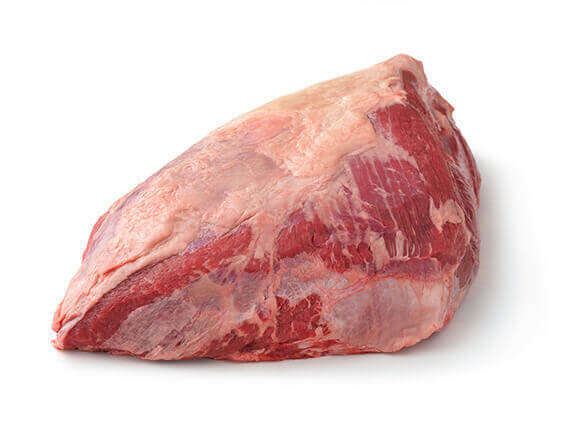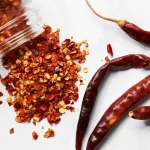Arm Roast vs Chuck Roast

The kind of cut you go for sometimes determines the taste and quality of meat that you get from your butcher. But bulk of the time, the intended use of the meat determines the kind of cut you should go for. Though there are lots and lots of beef roast cuts and for a newbie chef, it can get confusing pretty quickly. That is why I have this article on chuck roast bs arm roast cut.
I chose this right no because it seems to be one of the most confusing cuts out there that quite a lot of people don’t know how to differentiate arm roast cut from chuck roast cut, and also know how to choose from the two different beef roast cuts.
What is Arm Roast?
An arm roast, also known as an arm pot roast, is a cut of beef that comes from the shoulder area of the cow. It is typically taken from the upper portion of the front leg, near the shoulder joint.
The arm roast is a flavorful and relatively tender cut of meat. It contains a good amount of marbling, which contributes to its tenderness and enhances the flavor. The marbling helps keep the meat moist and juicy during cooking.
Arm roasts are often used for pot roasts and slow cooking methods. They are well-suited for braising, stewing, or cooking in a slow cooker, as the longer cooking time helps to break down the tough connective tissues and fibers, resulting in a tender and succulent roast.
When cooked properly, arm roasts can be very flavorful and have a rich, beefy taste. They are versatile and can be seasoned and flavored in various ways to suit different recipes and cuisines.
What is Chuck Roast?
Chuck roast is a cut of beef that comes from the shoulder area of the cow. It is taken from the primal cut known as the chuck, which is located in the front upper portion of the animal.
Chuck roast is known for its rich, beefy flavor and is often marbled with fat, which adds to its tenderness and juiciness. It contains a good amount of connective tissue, including collagen, which breaks down during cooking and helps create a tender and flavorful roast.
This cut is typically well-suited for slow cooking methods such as braising, pot roasting, or cooking in a slow cooker. The longer cooking time allows the connective tissues to break down, resulting in a tender and moist roast. Chuck roast is often used in dishes like pot roast, beef stew, and chili, where the slow cooking process helps develop its rich flavors.
Chuck roast is versatile and can be seasoned and flavored in various ways to suit different recipes and culinary traditions. It’s a popular choice for hearty, comfort food-style dishes due to its robust flavor and ability to become tender and flavorful when cooked low and slow.
It’s worth noting that the terminology for cuts of meat can vary slightly depending on your country and culture, so the exact naming and usage of the arm roast may differ in different culinary traditions.
Chuck Roast vs Arm Roast
Now, that we’ve gotten and understood the meaning of the beef cuts or what exactly they refer to, let’s get to know the differences or similarities as well as use cases for these individual beef roast cuts, otherwise, of what use is the arm roast vs chuck roast cut comparison if we can’t tell what they do differently from one and another or what they are used for and all that information that is important to chefs and cooks.
Both the arm roast and chuck roast come from the shoulder area of the cow and share some similarities, but there are also a few key differences between the two cuts:
- Location: The arm roast is taken from the upper portion of the front leg, near the shoulder joint. On the other hand, the chuck roast is cut from the primal cut known as the chuck, which is located in the front upper portion of the animal.
- Marbling and Fat Content: Both cuts can have marbling, which adds flavor and tenderness. However, the chuck roast typically has a higher fat content and more marbling compared to the arm roast. The additional fat can contribute to a richer flavor and juicier texture.
- Tenderness: The arm roast is generally considered slightly more tender compared to the chuck roast. This is because the arm roast contains less connective tissue and collagen compared to the chuck roast. However, both cuts can become tender when cooked using slow and moist cooking methods.
- Cooking Methods: Both cuts are well-suited for slow cooking methods such as braising, pot roasting, or using a slow cooker. The longer cooking time helps break down the tough connective tissues and fibers, resulting in tender and flavorful roasts. They are commonly used in dishes like pot roast, stews, and chili.
- Flavor: Both cuts offer a rich, beefy flavor. However, the chuck roast, with its higher fat content and marbling, tends to have a more pronounced and robust flavor. The arm roast has a slightly milder taste but can still be very flavorful when properly seasoned and cooked.
In summary, while both the arm roast and chuck roast are flavorful cuts from the shoulder area, the chuck roast generally has higher fat content, more marbling, and a stronger flavor. The choice between the two cuts depends on personal preference and the specific recipe or dish being prepared. Before choosing between arm roast vs chuck roast, perhaps you should first consider what is best for your target recipe.
For an easier understanding and for those who prefer tabular form of comparison, below is a table for chuck roast vs arm roast comparison, highlighting the key features of the two awesome beef roast cuts.
Arm Roast Cut vs Chuck Roast Cut Table
| Feature | Arm Roast | Chuck Roast |
|---|---|---|
| Location | Upper portion of the front leg | Primal cut from the chuck |
| Marbling and Fat | Moderate marbling and fat content | Higher fat content and more marbling |
| Tenderness | Slightly more tender | Less tender compared to arm roast |
| Cooking Methods | Braising, pot roasting, slow cooking | Braising, pot roasting, slow cooking |
| Flavor | Rich, beefy flavor | Robust, pronounced beef flavor |
Please note that these characteristics can vary depending on factors such as the specific breed of cattle, age of the animal, and the way the meat is processed and prepared. So, there could be a bit of slight differences here and there.



